Oxnead
Oxnead is a deserted village which lies on the
River Bure - approximately
4 miles south-east of Aylsham.
The name derives from the Old English for pasture for
oxen.
Oxnead Hall was one of the homes of the
Paston
family. It was originally built around 1580 by Admiral
Sir Clement Paston with money that he raised from
ransoming a captured French Admiral. In 1671, when
Robert Paston was in residence, the hall hosted King Charles II
and Queen Catherine of Braganza. It was remodelled by Nicholas Stone
between 1631-42. (Stone also sculpted some memorial busts
of Paston family members which can be seen inside Oxnead
and Paston churches.)
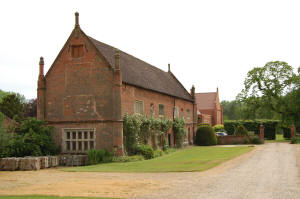
Oxnead Hall today
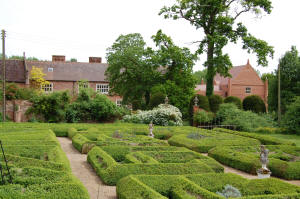
Oxnead Hall Gardens
However, by the eighteenth century this once great Norfolk family
had declined and William Paston, Second Earl of
Yarmouth, was forced to sell the hall and estate to pay
off debts. The hall was sold to Admiral Anson the
circumnavigator in 1757 and then eventually demolished -
with only the servant's wing remaining in tact.
Among the effects left in the house when it was sold were a
great many letters relating to the family's affairs -
dating back to the 15th Century. Fortunately these
letters found their way into the hands of the Norfolk
historian Francis Blomefield. However, they then passed
into the hands of a chemist at Diss
before eventually being obtained by Sir John Fenn of
Dereham. In 1787 Fenn
published the first selection of the letters. The
complete collection of approximately 1000 letters was
published in the 1870s.
Many of the Paston Letters centre around Margaret
Paston - either as writer or recipient - and provide a
fascinating insight into the War of the Roses period.
Many were written at
Caister Castle which
the family inherited (via a contested will) from Sir
John Fastolf. Like Parson Woodforde's diary, the letters
were not written with literary fame in mind - but purely
to pass information and record daily events. Agnes
Paston - who lived in the hall - was also one of the
family letter writers.
The church at Oxnead contains a number of memorials
to members of the Paston family - including a marble bust of
Katherine Paston (who died in 1636) and the grand alabaster tomb of Sir
Clement.
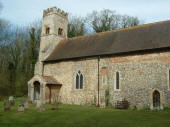
St. Michael's Church, Oxnead
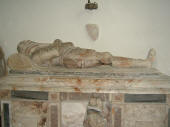
Sir Clement Paston's Tomb
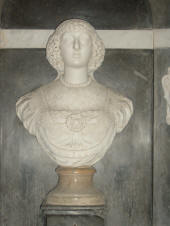
Bust of Lady Katherine Paston
Lady Katherine was the inspiration
for two poems: the first was a memorial sonnet which is
carved on a tablet just to the right of her bust.
|
Needes she another
Monument of Stone,
Who had so many better than this one,
All which were with noble hearts, whom her decease
Transmuted into marble Niobes:
Each Tombe was arch'd about with weepeing eyes
Whom sorowes blasts did likewise cristalize:
True Pietye, Vertue, Love, and honour'd blood,
On both sides as Corinthian columnes stood:
Three Children Angells were which did disperse
Youth, Beautye, Wealth, like flowers on each hearse:
A foliage of humane fraile estate,
The basiment of the worke did variate:
But Glory, like a Pyramid above,
The Fabricke crown'd, & reach'd y Court of love. |
The second poem, entitled On Lady Katherine Paston's Tomb
at Oxnead, was written by Michael Rivière
(1919-1997) and is an intriguing piece about St
Michael's Church and the demise of
Oxnead Hall and the Paston family. Rivière,
who was the father of the novelist William Rivière,
lived for many years at Dilham
Grange.
|
Sun set three
hundred years,
These marble shadows on the wall still stand,
Fixed by her husband’s grief, and Stone’s hand,
Long vanished skill, and wealth, and tears. Outside
her dilapidated
Church the usual June again transposes
The graveyard offals into grass and roses,
Beauty and corruption equated,
Balanced principles,
Whereby this white memento-mori is
Now mere memoria pulchritudinis,
New summer dappling her walls.
We’re not the tomorrow, alas,
Of this lady’s wish; her treasures scattered for ever,
Her mansion now green mounds beside the river,
Not a Paston left to wear her flesh…
And since we put the resurrection
Even of annual crops to chance,
Eternity of blood’s no longer, as once,
Any man’s confident possession.
We do with less than that:
The uncertain hope that someone not yet born
May saunter here on a remote June morning
To find the key under the mat. |
In 2021, I wrote the following sonnet about the
Pastons:
|
Oxnead
On a
low hill above the River Bure
They built their grand
mansion of many wings -
A symbol of their power and
greatness there:
Opulent, ornate and fit for kings.
But like all dynasties, the Pastons fell
And, in
time, their great hall crumbled too:
So only cold busts
in the church now tell
How this old family ruled and how
through
The centuries they flexed their might - and
thanks
To writs, contested wills and artistry
They
rose up quickly through the Norfolk ranks -
But might
have vanished into history
But for a chest of letters
that were found
Among the debris on the Bure-side ground.
|
|
Oxnead Hall was extensively redesigned by the
photographer John Hedgecoe (1932-2010). |
Links:
More Photographs of Oxnead
More Paston Family Photographs
Read a Paston
Letter
|
|

